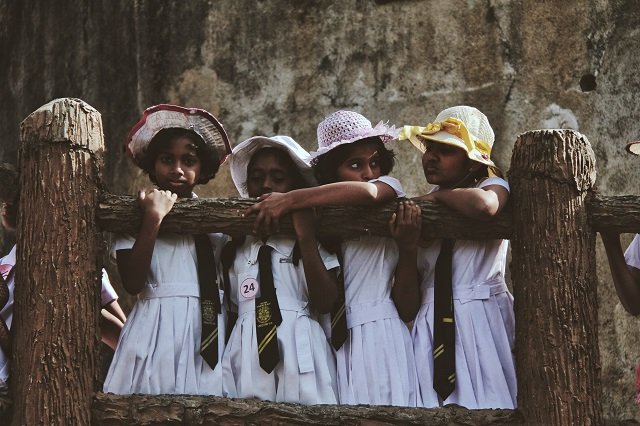Unmasking the deceptive political maneuvers of Tamil elite and their manipulation of the 'ethnic' problem, while shedding light on the deeply-rooted caste-based discrimination that pervades Tamil society.
by Shenali D Waduge
In the annals of history, the plight of the Tamil community has been often viewed through the lens of an “ethnic” problem. However, beneath the surface lies a more profound and intricate web of social stratification perpetuated by the elite Vellala Tamils. The international community has unwittingly embraced incomplete narratives, obscuring the true essence of the struggle. This article seeks to delve deep into the shadows, unveiling the manipulative manoeuvres of Tamil leaders, shedding light on the roots of the issue, and exposing the historic caste-based divisions that persist to this day.
 |
| Grandmother with her Granson in Jaffna [ Photo credit Claudia Willmitzer - claudiawillmitzer.com ] |
The Tamil National Alliance (TNA), adorned with Jaffna-centric Vellala Tamils, claims to represent the entire Tamil community. However, the truth remains that they have long neglected the upliftment of low-caste Tamils, solely seeking to wield power over their brethren. Devolution, often hailed as a solution, has proven detrimental to the majority of Tamils, who are not among the privileged Vellalas.
In the realm of politics, social issues are exploited to serve vested interests. The cause of many problems is deeply rooted in the manoeuvres of politicians themselves. Both the public and private sectors have joined this game for their own advantages, leaving the common people facing challenges from all directions.
The so-called “ethnic” problem traces its origins back to a cleverly devised plan by Tamil leaders. Sir Ponnambalam Arunachalam initiated the creation of an artificial identity called “Ceylon Tamils,” laying the foundation for a fabricated struggle. Subsequently, G G Ponnambalam’s demands for disproportionate representation further fueled the fire.
Amidst the clamour of an “ethnic” problem, the pressing issue of caste-based discrimination was conveniently sidelined. The Prevention of Social Disabilities Act in 1957 aimed to alleviate the plight of Tamil lower castes, providing them with access to education and religious places. Surprisingly, the high-caste Tamils showed more concern for their dominance than supporting the Official Language Act.
The fervour against the Official Language Act pales in comparison to the protests triggered by the Prevention of Social Disabilities Act. The Tamil elite, unable to openly oppose the privileges granted to the low castes, turned to racial hatred and divisive campaigns to divert attention and consolidate their power.
The high-caste Vellala Tamils displayed a clear disregard for their own people. They discriminated against their fellow Tamils of lower castes while treating the Sinhalese with relative impartiality. This disparity in treatment exposes the underlying caste-based agenda that trumps any genuine concern for the Tamil community’s well-being.
The Bandaranaike-Chelvanayagam Pact, portrayed as a solution for devolution, was merely a ruse to reverse the progress made by the Prevention of Social Disabilities Act. The Tamil elite sought to perpetuate their control over the low-caste Tamils, denying them the opportunities that the Act had granted.
The introduction of university standardization aimed to create a level playing field for all students, regardless of caste or class. However, this move was met with fierce resistance from the high-caste Tamils, who were loath to share their privileges with the less privileged.
The 1976 Vaddukoddai Resolution and the emergence of the LTTE were a result of the crafty schemes of the high-caste elite, who cunningly ensnared low-caste Tamils into a futile war. The majority of LTTE cadres were from the lower castes, while the elite distanced themselves from the horrors they had orchestrated.
The Tamil community’s struggle is far more complex than an “ethnic” problem; it is deeply entrenched in centuries-old caste-based divisions perpetuated by the crafty Vellala elite. To find a lasting solution, the Tamil society must confront this internal strife and unite against the true enemy – not the Sinhalese people but the high-caste Vellalas themselves. Only by acknowledging and addressing these internal divisions can the Tamil community rise above manipulation and claim a future of true equality and progress.
Shenali D Waduge is an independent political analyst based in Colombo















Post a Comment